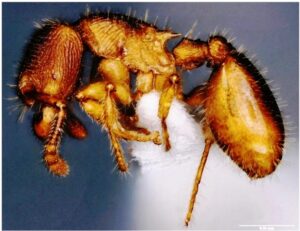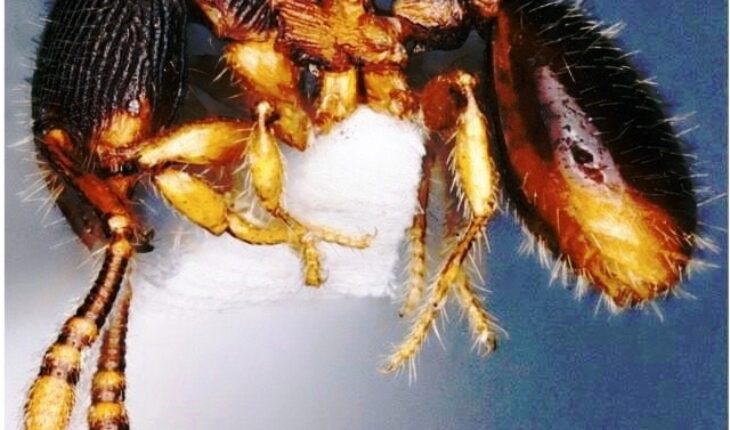By Dominick Rodrigues
Two new species of ants — belonging to a rare ant genus +Myrmecin+ from the Eastern Himalayas — have been discovered in a study recently conducted as part of a research project on “Bioresource and Sustainable livelihoods in North East India, supported by Department of Biotechnology, (Government of India).
The discovery of two new species marks the first record of the genus from the state Mizoram. With the present discovery, there are 7 known species of Myrmecina in India.

While ants are considered by some as a nuisance, this tiny creature is a “super-organism” that plays an important role in the ecosystem as seed dispersers, predators and pollinators.
Dr. Priyadarsanan Dharma Rajan (Senior Fellow) and Aswaj Punnath, researchers from ATREE (Bangalore), made this rare find during their extensive exploration in the hilly terrains of Northeast India.
Myrmecina, being cryptic ants, are rarely encountered in visual surveys and their biology and behaviour is not much known, except that they live in small colonies of 30 to 150 individuals under stones or decaying wood.
The research team carried out an extensive sampling in Mizoram state — which lies in the Indo-Burma hotspot region — in April 2019 and collected samples from almost all the protected areas and community reserve forests of Mizoram.
“We had a strong feeling of finding something interesting in the beautiful landscape of Mizoram and chose to explore the deep forest regions — where there are no signs of anthropogenic disturbances –by setting pitfall traps for collecting subterranean ants”.
A large number of ants follow a “cryptobiotic” lifestyle, that witnesses them living in hidden habitats such as beneath leaf litter, and these include several species unknown to science.
“We used the non-conventional collection method — the Winkler extractor — for collecting ant samples from the leaf litter. After coming back from the field, while cleaning and sorting specimens under the microscope, we found a small yellow coloured ant that was quite different from many common ants. Careful examination of its morphological characters showed it was a new species.”
“As Ashoka Trust for Research in Ecology and the Environment (ATREE) is celebrating its 25th anniversary in 2021, we named one of the new species Myrmecina bawai in honour of the founder president of ATREE, Prof. Kamaljit S. Bawa, renowned evolutionary ecologist and conservation biologist.
“Myrmecina bawai is unique from all its congeners in India with its remarkable yellow-coloured body having a dark tinge. Two workers of Myrmecina bawai were collected from Phawngpui National Park — often called “Blue Mountain National Park” – which is the highest mountain peak in Mizoram with a maximum altitude of 2157 m above sea level. We found Myrmecina bawai in a shaded region at an elevation of 1619 m above sea level.”
Then, while searching eagerly for other interesting species from the genus, the researcher duo discovered a Myrmecina reticulata ant in the Winkler trap. This new species had a remarkable and unique reticulate sculpture on the gaster (abdomen), which made them name this species as “Myrmecina reticulata.”
The collection site of Myrmecina reticulata sits in the Dampa Tiger Reserve, Mamit district at an elevation of 409 m above sea level. Mizoram has rich floral and faunal diversity and it forms a part of the Indo-Burma biodiversity hotspot region.
“When we started this study, 57 species of ants were known from Mizoram. Now we are adding another 20 more species to the ant fauna of Mizoram. Extensive exploration of the Eastern Himalayan region in the future, especially by using non-conventional collection methods, would help us to find more such ants,” the duo stated, adding that this study has been published in the latest issue of Zootaxa.






